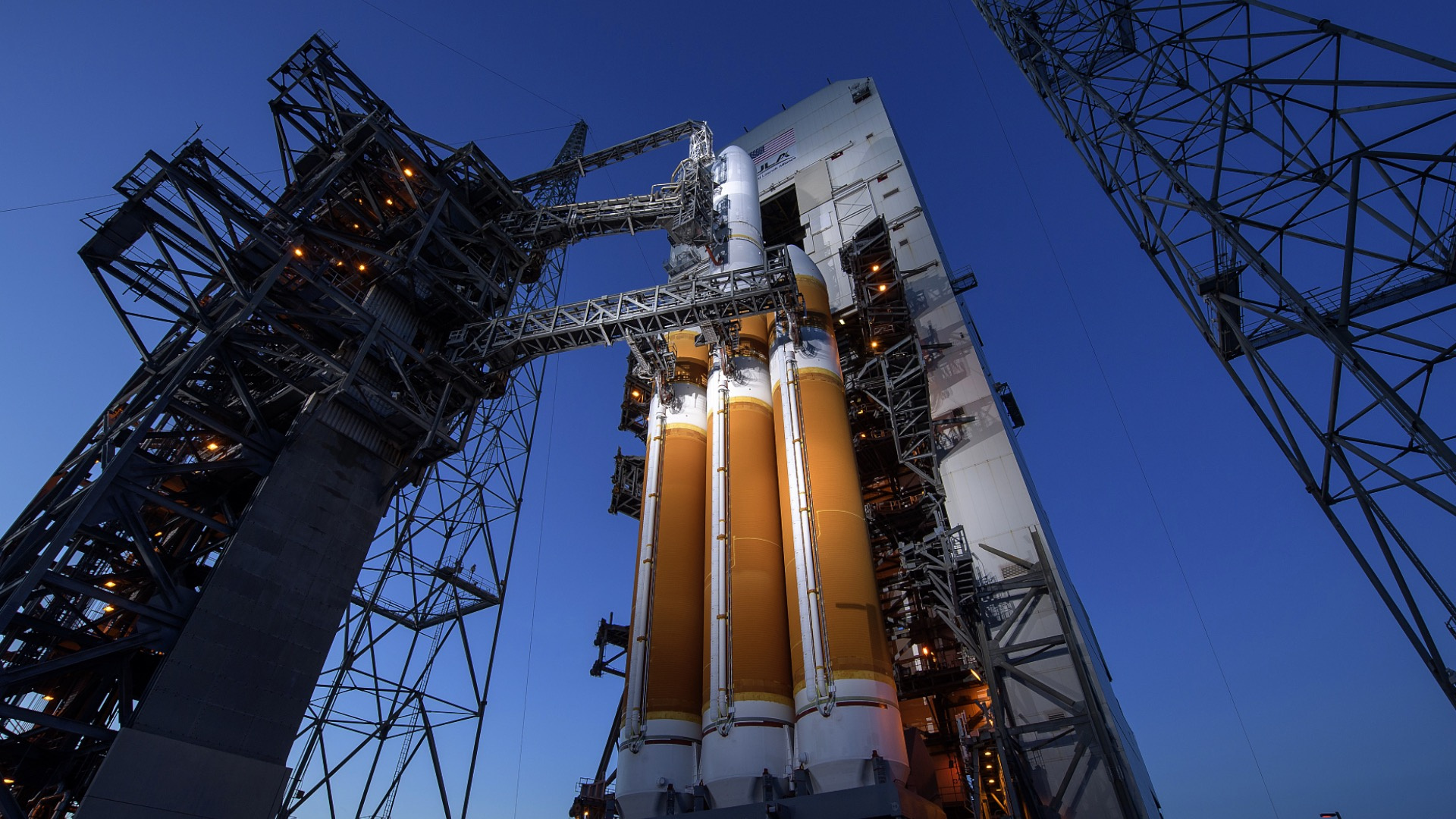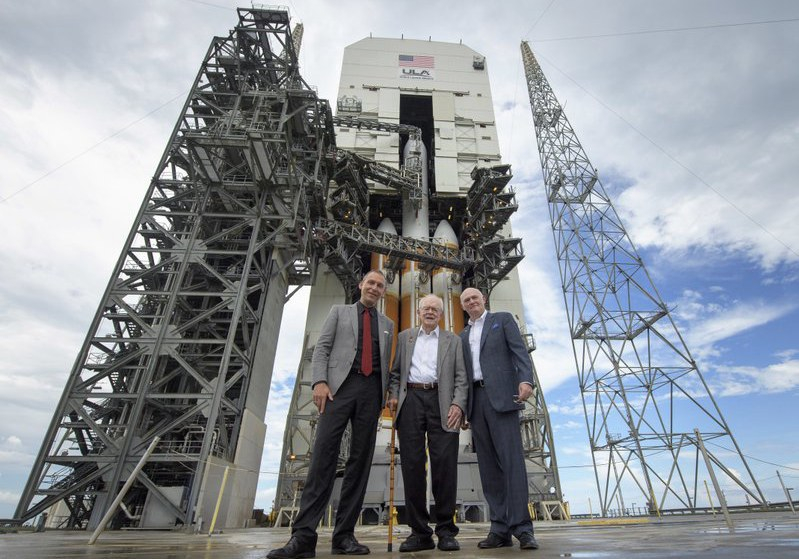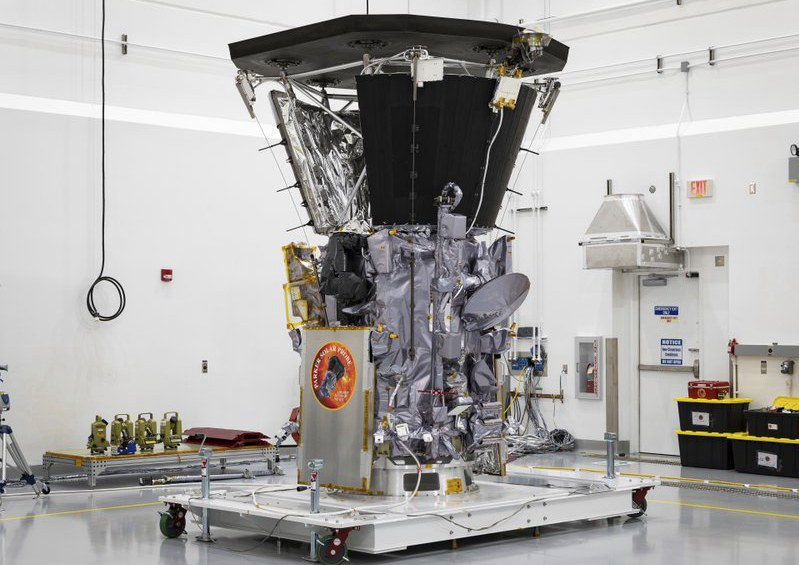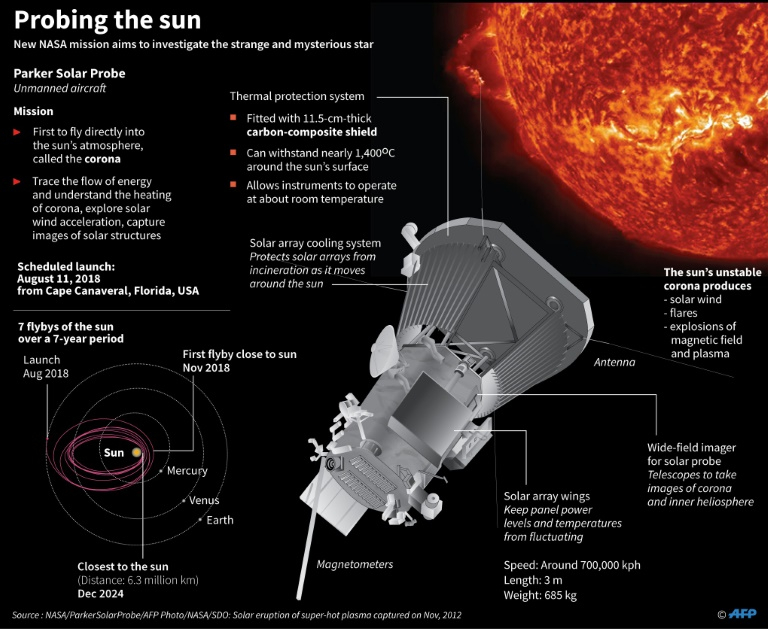
Space
15:31, 12-Aug-2018
NASA's Parker Solar Probe lifts off on historic mission to 'touch the Sun'
Updated
15:25, 15-Aug-2018
CGTN
01:09

NASA on Sunday launched a car-sized spacecraft, the Parker Solar Probe, on an unprecedented quest to get closer to the sun than anything ever sent into space before.
"Three, two, one, and liftoff!" said a NASA commentator as the Parker Solar Probe's launch lit up the dark night sky aboard a Delta IV-Heavy rocket from Cape Canaveral, Florida, US, at 3:31 am (0731 GMT).
The Parker Solar Probe will fly straight through the wispy edges of the corona, also known as the outer solar atmosphere, and eventually get close to the Sun's surface, at a distance where it can staying comfortably cool despite the extreme heat and radiation, allowing scientists to vicariously explore the sun in a way never before possible.
Despite the last-minute technical problem on Saturday, NASA noted there is no better day to launch to the sun than a Sunday.
91-year-old namesake
For the second straight day, thousands of spectators jammed the launch site, as well as surrounding towns, in the middle of the night to get a good viewe of the historic launch, including 91-year-old astrophysicist Eugene Parker after whom the spacecraft is named. He proposed the existence of solar wind – a steady, supersonic stream of particles blasting off the sun – 60 years ago.

Astrophysicist Eugene Parker (C) stands with NASA Associate Administrator for the Science Mission Directorate Thomas Zurbuchen (L), and United Launch Alliance President and Chief Executive Officer Tory Bruno in front of the ULA Delta IV Heavy rocket with NASA's Parker Solar Probe onboard at Cape Canaveral Air Force Station, Florida, US, Friday, August 10, 2018. /NASA Photo
Astrophysicist Eugene Parker (C) stands with NASA Associate Administrator for the Science Mission Directorate Thomas Zurbuchen (L), and United Launch Alliance President and Chief Executive Officer Tory Bruno in front of the ULA Delta IV Heavy rocket with NASA's Parker Solar Probe onboard at Cape Canaveral Air Force Station, Florida, US, Friday, August 10, 2018. /NASA Photo
It was the first time NASA named a spacecraft after someone still alive, and Parker wasn't about to let it take off without him. Last week, he said he was "impressed" by the Parker Solar Probe, calling it "a very complex machine."
"I'm just so glad to be here with him," said NASA's science mission chief, Thomas Zurbuchen. "Frankly, there’s no other name that belongs on this mission."
Scientists have wanted to build a spacecraft like this for more than 60 years, but only in recent years did the heat shield technology advance enough to be capable of protecting sensitive instruments.
Tools on board will measure high-energy particles associated with flares and coronal mass ejections, as well as the changing magnetic field around the Sun.
A white light imager will take photos of the atmosphere directly in front of the Sun.
On its very first brush with the sun, it will come within 25 million kilometers, easily beating the current record set by NASA's Helios 2 spacecraft in 1976. By the time Parker gets to its 22nd orbit of the sun, it will be even deeper into the corona and traveling at a record-breaking 690,000 km/h.
Nothing from Earth has ever hit that kind of speed.
"To me, it's still mind-blowing," project scientist Nicola Fox of Johns Hopkins University said. "Even I still go, really? We're doing that?"
Heat shield
The probe is guarded by an ultra-powerful heat shield that is just 11.43-centimeter thick, enabling the spacecraft to survive its close shave with the fiery star.

Photo shows the Parker Solar Probe in a clean room at Astrotech Space Operations in Titusville, Florida, US, after the installation of its heat shield on July 6, 2018. /NASA Photo
Photo shows the Parker Solar Probe in a clean room at Astrotech Space Operations in Titusville, Florida, US, after the installation of its heat shield on July 6, 2018. /NASA Photo
Even in a region where temperatures can reach more than a million degrees Fahrenheit, the sunlight is expected to heat the shield to just around 2,500 degrees Fahrenheit (1,371 degrees Celsius).
If everything works as planned, the inside of the spacecraft should stay at just 85 degrees Fahrenheit.
The goal for the Parker Solar Probe is to make 24 passes through the corona during its seven-year, 1.5 billion US dollar undertaking.
"The sun is full of mysteries," said Fox. "We are ready. We have the perfect payload. We know the questions we want to answer."
Strange veil
In reality, the Parker Solar Probe should come within 6.16 million kilometers of the Sun's surface, close enough to study the curious phenomenon of the solar wind and the Sun's atmosphere, known as the corona, which is 300 times hotter than its surface.

Probing the Sun /AFP Photo
Probing the Sun /AFP Photo
The probe is designed to give scientists a better understanding of solar winds and the geomagnetic storms that risk wreaking chaos on Earth by knocking out the power grid.
These solar outbursts are poorly understood, but pack the potential to wipe out power for millions of people.
A worst-case scenario could cost up to two trillion US dollars in the first year alone and take a decade to fully recover from, experts have warned.
"The Parker Solar Probe will help us do a much better job of predicting when a disturbance in the solar wind could hit Earth," said Justin Kasper, a project scientist and professor at the University of Michigan.
Knowing more about the solar wind and space storms will also help protect future deep space explorers as they journey toward the Moon or to Mars.
Source(s): AP
,AFP

SITEMAP
Copyright © 2018 CGTN. Beijing ICP prepared NO.16065310-3
Copyright © 2018 CGTN. Beijing ICP prepared NO.16065310-3